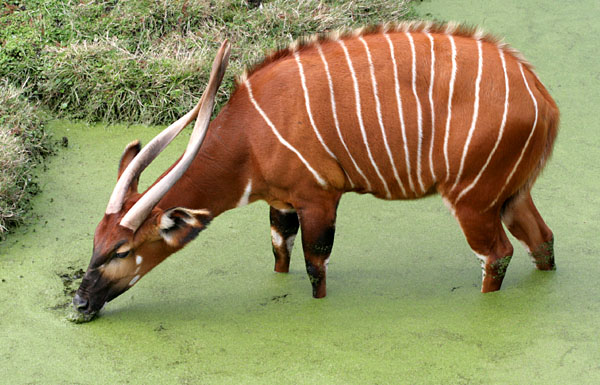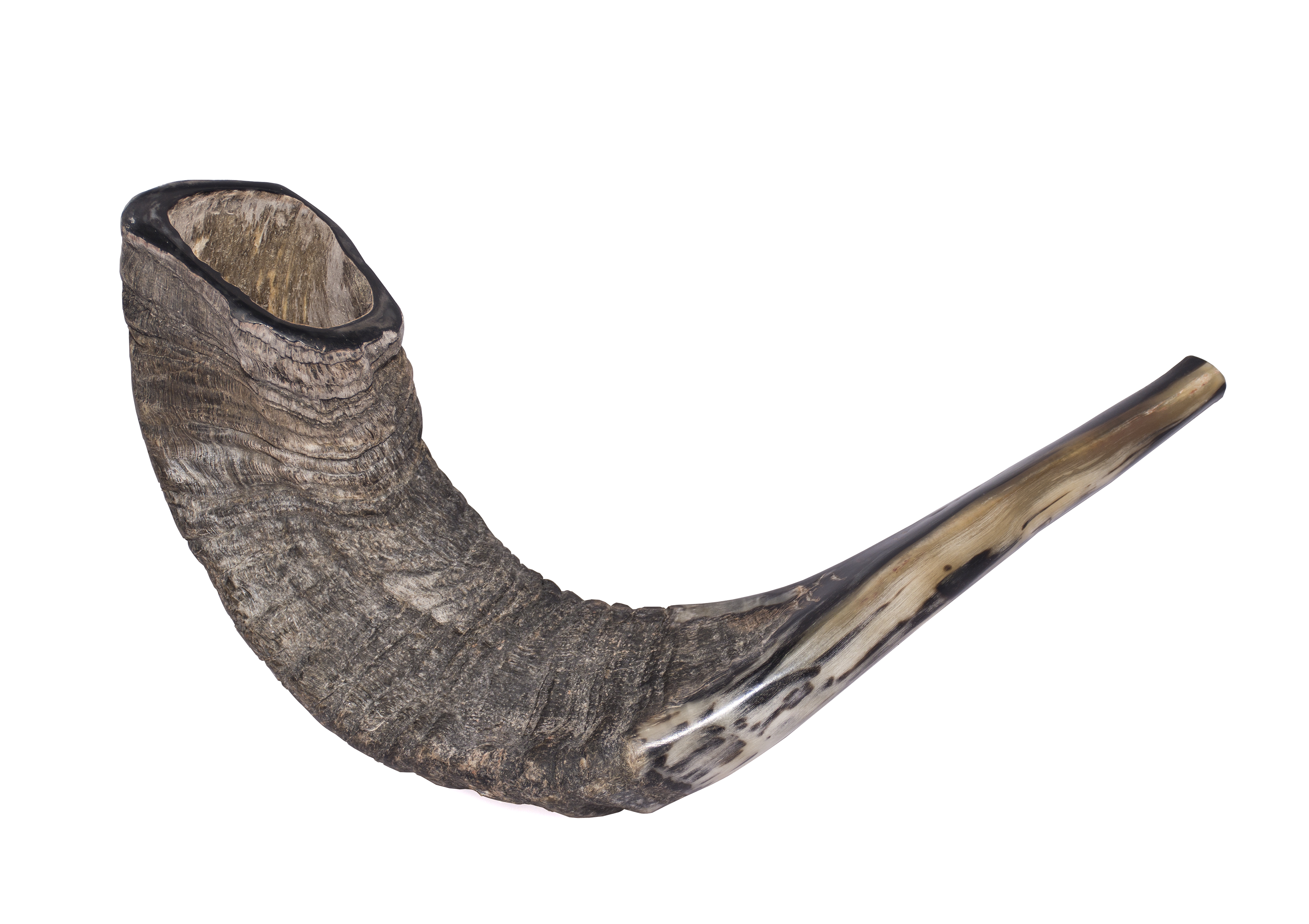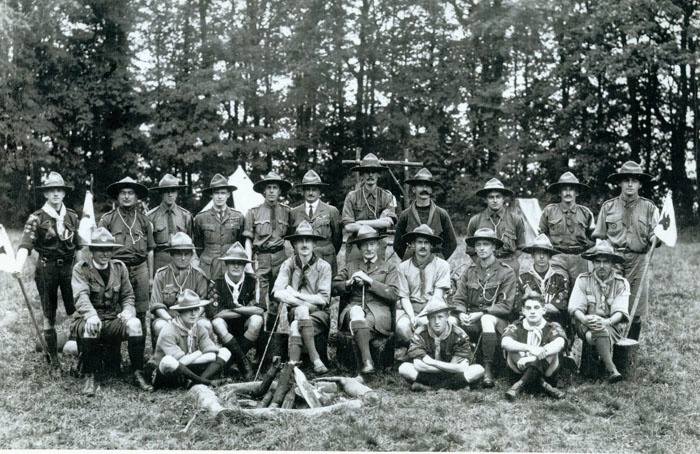|
Kudu
The kudus are two species of antelope of the genus ''Tragelaphus'': * Lesser kudu, ''Tragelaphus imberbis'', of eastern Africa * Greater kudu, ''Tragelaphus strepsiceros'', of eastern and southern Africa The two species look similar, though greaters are larger than lessers. A large adult male greater kudu stands over tall at the shoulder, and a large male lesser kudu stands about tall. Males of both species have long horns, which point upward and slightly back, curling in a corkscrew shape. Etymology The name of the animal was imported into English in the 18th century from isiXhosa ''iqhude'', via Afrikaans ''koedoe''. Kudu, or koodoo, is the Khoikhoi and seTswana name for this antelope. ''Tragos'' (Greek) denotes a he-goat and ''elaphos'' (Greek) a deer. ''Strepho'' (Greek) means "I twist", and ''strephis'' is "twisting". ''Keras'' (Greek) means "horn". Habitat Lesser kudus occupy savanna near '' Acacia'' and ''Commiphora'' shrubs. They rely on thickets for prote ... [...More Info...] [...Related Items...] OR: [Wikipedia] [Google] [Baidu] |
Greater Kudu
The greater kudu (''Tragelaphus strepsiceros'') is a woodland antelope found throughout eastern and southern Africa. Despite occupying such widespread territory, they are sparsely populated in most areas due to declining habitat, deforestation, and poaching. The greater kudu is one of two species commonly known as kudu, the other being the lesser kudu, ''T. imberbis''. Etymology of the name Kudu ( ), or koodoo, is the Khoikhoi name for this antelope. ''Trag-'' (Greek) denotes a goat and ''elaphos'' (Greek) a deer. ''Strepho'' (Greek) means "twist", and ''strepsis'' is "twisting". ''Keras'' (Greek) refers to the horn of the animal. Physical characteristics Greater kudus have a narrow body with long legs, and their coats can range from brown/bluish grey to reddish brown. They possess between 4 and 12 vertical white stripes along their torso. The head tends to be darker in colour than the rest of the body, and exhibits a small white chevron which runs between the eyes. Greater ... [...More Info...] [...Related Items...] OR: [Wikipedia] [Google] [Baidu] |
Lesser Kudu
The lesser kudu (''Tragelaphus imberbis'') is a bushland antelope found in East Africa. It is placed in the genus ''Tragelaphus'' and family Bovidae. It was first scientifically described by the English zoologist Edward Blyth in 1869. The head-and-body length is typically . Males reach about at the shoulder, while females reach . Males typically weigh and females . The females and juveniles have a reddish-brown coat, while the males become yellowish grey or darker after the age of 2 years. Horns are present only on males. The spiral horns are long, and have two to two-and-a-half twists. A pure browser, the lesser kudu feeds on foliage from bushes and trees (shoots, twigs) and herbs. Despite seasonal and local variations, foliage from trees and shrubs constitute 60–80% of the diet throughout the year. The lesser kudu is mainly active at night and during the dawn, and seeks shelter in dense thickets just after the sunrise. The lesser kudu exhibits no territorial behaviour, an ... [...More Info...] [...Related Items...] OR: [Wikipedia] [Google] [Baidu] |
Kudu (17418137574)
The kudus are two species of antelope of the genus ''Tragelaphus'': * Lesser kudu, ''Tragelaphus imberbis'', of eastern Africa * Greater kudu, ''Tragelaphus strepsiceros'', of eastern and southern Africa The two species look similar, though greaters are larger than lessers. A large adult male greater kudu stands over tall at the shoulder, and a large male lesser kudu stands about tall. Males of both species have long horns, which point upward and slightly back, curling in a corkscrew shape. Etymology The name of the animal was imported into English in the 18th century from isiXhosa ''iqhude'', via Afrikaans ''koedoe''. Kudu, or koodoo, is the Khoikhoi and seTswana name for this antelope. ''Tragos'' (Greek) denotes a he-goat and ''elaphos'' (Greek) a deer. ''Strepho'' (Greek) means "I twist", and ''strephis'' is "twisting". ''Keras'' (Greek) means "horn". Habitat Lesser kudus occupy savanna near ''Acacia'' and ''Commiphora'' shrubs. They rely on thickets for protect ... [...More Info...] [...Related Items...] OR: [Wikipedia] [Google] [Baidu] |
Tragelaphus
''Tragelaphus'' is a genus of medium- to large-sized, spiral-horned antelopes. It contains several species of bovines, all of which are relatively antelope-like. Species in this genus tend to be large in size and lightly built, and have long necks and considerable sexual dimorphism. Elands, including the common eland (''Taurotragus oryx''), are embedded within this genus, meaning that ''Taurotragus'' must be subsumed into ''Tragelaphus'' to avoid paraphyly. Alternatively, ''Taurotragus'' could be maintained as a separate genus, if the nyala and the lesser kudu are relocated to their own monospecific genera, respectively ''Nyala'' and ''Ammelaphus''. Other generic synonyms include ''Strepsiceros'' (which applies to ''T. strepsiceros'') and ''Boocercus'' (for ''T. eurycerus''). The name "Tragelaphus" comes from the mythical tragelaph. Taxonomy and phylogeny ''Tragelaphus'' is a genus in the tribe Tragelaphini and the family Bovidae. The genus authority is French zoologist Henr ... [...More Info...] [...Related Items...] OR: [Wikipedia] [Google] [Baidu] |
Shofar
A shofar ( ; from he, שׁוֹפָר, ) is an ancient musical horn typically made of a ram's horn, used for Jewish religious purposes. Like the modern bugle, the shofar lacks pitch-altering devices, with all pitch control done by varying the player's embouchure. The shofar is blown in synagogue services on Rosh Hashanah and at the end of Yom Kippur; it is also blown every weekday morning in the month of Elul running up to Rosh Hashanah. Shofars come in a variety of sizes and shapes, depending on the choice of animal and level of finish. Bible and rabbinic literature The shofar is mentioned frequently in the Hebrew Bible, the Talmud and rabbinic literature. In the first instance, in , the blast of a shofar emanating from the thick cloud on Mount Sinai makes the Israelites tremble in awe. The shofar was used to announce the new moon and the Jubilee year. The first day of Tishrei (now known as Rosh Hashana) is termed a "memorial of blowing", or "day of blowing", the shofar. ... [...More Info...] [...Related Items...] OR: [Wikipedia] [Google] [Baidu] |
Antelope
The term antelope is used to refer to many species of even-toed ruminant that are indigenous to various regions in Africa and Eurasia. Antelope comprise a wastebasket taxon defined as any of numerous Old World grazing and browsing hoofed mammals belonging to the family Bovidae of the order Artiodactyla. A stricter definition, also known as the "true antelopes," includes only the genera ''Gazella'', ''Nanger'', ''Eudorcas'' and ''Antilope''. One North American species, the pronghorn, is colloquially referred to as the "American antelope," but it belongs to a different family from the African and Eurasian antelopes. A group of antelope is called a herd. Unlike deer antlers, which are shed and grown annually, antelope horns grow continuously. Etymology The English word "antelope" first appeared in 1417 and is derived from the Old French ''antelop'', itself derived from Medieval Latin ''ant(h)alopus'', which in turn comes from the Byzantine Greek word ἀνθόλοψ, ''anthó ... [...More Info...] [...Related Items...] OR: [Wikipedia] [Google] [Baidu] |
Wood Badge
Wood Badge is a Scouting leadership programme and the related award for adult leaders in the programmes of Scout associations throughout the world. Wood Badge courses aim to make Scouters better leaders by teaching advanced leadership skills, and by creating a bond and commitment to the Scout movement. Courses generally have a combined classroom and practical outdoors-based phase followed by a Wood Badge ''ticket'', also known as the project phase. By "working the ticket", participants put their newly gained experience into practice to attain ticket goals aiding the Scouting movement. The first Wood Badge training was organized by Francis "Skipper" Gidney and lectured at by Robert Baden-Powell and others at Gilwell Park (United Kingdom) in September 1919. Wood Badge training has since spread across the world with international variations. On completion of the course, participants are awarded the Wood Badge beads to recognize significant achievement in leadership and direc ... [...More Info...] [...Related Items...] OR: [Wikipedia] [Google] [Baidu] |
Scouting
Scouting, also known as the Scout Movement, is a worldwide youth movement employing the Scout method, a program of informal education with an emphasis on practical outdoor activities, including camping, woodcraft, aquatics, hiking, backpacking, and sports. Another widely recognized movement characteristic is the Scout uniform, by intent hiding all differences of social standing in a country and encouraging equality, with neckerchief and campaign hat or comparable headwear. Distinctive uniform insignia include the fleur-de-lis and the trefoil, as well as merit badges and other patches. In 1907, Robert Baden-Powell, a Lieutenant General in the British Army, held a Scouting encampment on Brownsea Island in England. Baden-Powell wrote '' Scouting for Boys'' (London, 1908), partly based on his earlier military books. The Scout Movement of both Boy Scouts and Girl Scouts was well established in the first decade of the twentieth century. Later, programs for younger children, such as ... [...More Info...] [...Related Items...] OR: [Wikipedia] [Google] [Baidu] |
Spotted Hyena
The spotted hyena (''Crocuta crocuta''), also known as the laughing hyena, is a hyena species, currently classed as the sole extant member of the genus ''Crocuta'', native to sub-Saharan Africa. It is listed as being of least concern by the IUCN on account of its widespread range and large numbers estimated between 27,000 and 47,000 individuals. The species is, however, experiencing declines outside of protected areas due to habitat loss and poaching. The species may have originated in Asia, and once ranged throughout Europe for at least one million years until the end of the Late Pleistocene. The spotted hyena is the largest known member of the Hyaenidae, and is further physically distinguished from other species by its vaguely bear-like build, its rounded ears, its less prominent mane, its spotted pelt, its more dual-purposed dentition, its fewer nipples and the presence of a #Female genitalia, pseudo-penis in the female. It is the only placental mammalian species where females ... [...More Info...] [...Related Items...] OR: [Wikipedia] [Google] [Baidu] |
African Wild Dog
The African wild dog (''Lycaon pictus''), also called the painted dog or Cape hunting dog, is a wild canine which is a native species to sub-Saharan Africa. It is the largest wild canine in Africa, and the only extant member of the genus '' Lycaon'', which is distinguished from ''Canis'' by dentition highly specialised for a hypercarnivorous diet, and by a lack of dewclaws. It is estimated that about 6,600 adults (including 1,400 mature individuals) live in 39 subpopulations that are all threatened by habitat fragmentation, human persecution, and outbreaks of disease. As the largest subpopulation probably comprises fewer than 250 individuals, the African wild dog has been listed as endangered on the IUCN Red List since 1990. The species is a specialised diurnal hunter of antelopes, which it catches by chasing them to exhaustion. Its natural enemies are lions and spotted hyenas: the former will kill the dogs where possible, whilst hyenas are frequent kleptoparasites. Like ot ... [...More Info...] [...Related Items...] OR: [Wikipedia] [Google] [Baidu] |
Panthera Leo Melanochaita
''Panthera leo melanochaita'' is a lion subspecies in Southern Africa, Southern and East Africa. In this part of Africa, lion populations are regionally locally extinct, extinct in Lesotho, Djibouti and Eritrea, and are threatened by loss of habitat and prey base, killing by local people in retaliation for loss of livestock, and in several countries also by trophy hunting. Since the turn of the 21st century, lion populations in intensively managed protected areas in Botswana, Namibia, South Africa and Zimbabwe have increased, but declined in East African range countries. In 2005, a Lion Conservation Strategy was developed for East and Southern Africa. Results of a phylogeographic study indicate that lion populations in southern and eastern Africa are forming a major clade distinct from lion populations in West Africa, Central Africa and Asia. In 2017, the Cat Classification Task Force of the IUCN Cat Specialist Group subsumed lion populations according to the major clades into two ... [...More Info...] [...Related Items...] OR: [Wikipedia] [Google] [Baidu] |
Horn (instrument)
A horn is any of a family of musical instruments made of a tube, usually made of metal and often curved in various ways, with one narrow end into which the musician blows, and a wide end from which sound emerges. In horns, unlike some other brass instruments such as the trumpet, the bore gradually increases in width through most of its length—that is to say, it is conical rather than cylindrical. In jazz and popular-music contexts, the word may be used loosely to refer to any wind instrument, and a section of brass or woodwind instruments, or a mixture of the two, is called a horn section in these contexts. Types Variations include: *Lur (prehistoric) *Shofar *Roman horns: ** Cornu **Buccina * Dung chen *Dord * Sringa * Nyele *Wazza *Alphorn *Cornett *Serpent * Ophicleide *Natural horn **Bugle **Post horn *French horn *Vienna horn *Wagner tuba *Saxhorns, including: **Alto horn (UK: tenor horn), pitched in E ** Baritone horn, pitched in B * Valved bugles, including ** c ... [...More Info...] [...Related Items...] OR: [Wikipedia] [Google] [Baidu] |
.jpg)







.jpg)

